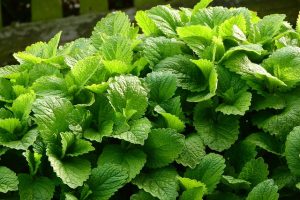Creating a garden that thrives in shade can be a rewarding experience, especially in USDA Hardiness Zone 5, where winter temperatures can drop to -15°F (-26°C) to -10°F (-23°C). Many gardeners shy away from the shaded areas of their yards, believing that their options are limited. However, this misconception couldn’t be further from the truth! Zone 5 presents a fabulous array of plants that not only survive but flourish in low-light conditions. Let’s explore some of the best shade garden plants that will enliven your garden, each of them unique, hardy, and beautiful.
Hosta (Hosta spp.)
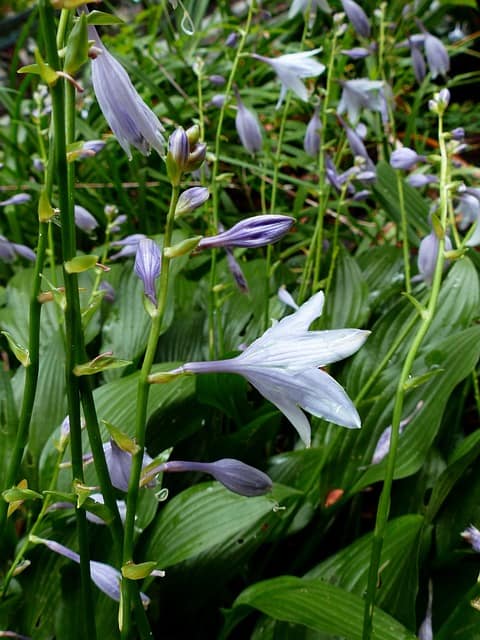
Hostas are the quintessential shade-loving perennials, prized for their lush foliage and vibrant variety of sizes, shapes, and colors. With broad leaves ranging from emerald green to mesmerizing blues and greens, these plants thrive in the dappled shade of trees or in the darker corners of gardens. Hosta varieties, such as ‘Sum and Substance’ and ‘Blue Angel,’ can grow significantly large, creating stunning focal points, while smaller varieties like ‘Mouse Ears’ can tuck nicely into more compact spaces.
In terms of care, Hostas are fairly low-maintenance. Regular watering and mulch will help keep roots cool and moisture-retentive. But do watch out for slugs and snails, which are notorious for munching on their tender leaves. Hostas also produce delicate flower spikes in summer, attracting hummingbirds and pollinators, further enhancing the wildlife-friendly aspect of your shade garden.
Astilbe (Astilbe spp.)
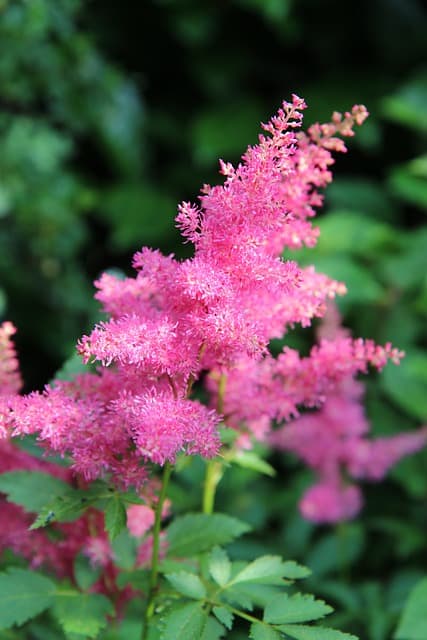
Astilbe is adored for its feathery, plume-like flower spikes that make a dramatic statement in shaded areas. From late spring to early summer, these perennial flowers come alive in hues of pink, red, white, and purple, offering a colorful display against their coarse, green foliage. They thrive in consistently moist soil, making them an excellent choice for areas near ponds, streams, or any relatively wet spots in the garden.
With varieties like ‘Fanal’ and ‘Bridal Veil,’ you can easily add texture and height to your planting scheme. Their light and airy flowers not only enhance visual interest but also attract bees and butterflies, making your garden buzz with life. Astilbes do appreciate a bit of organic matter added to the soil to enhance drainage and fertility, so amending your planting site with rich compost will work wonders.
Coral Bells (Heuchera spp.)
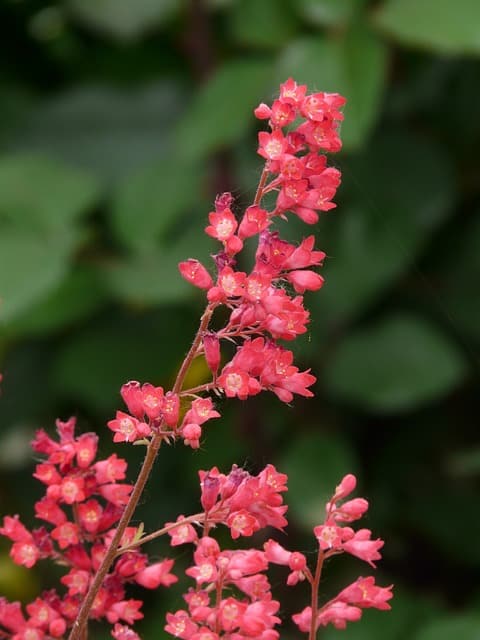
Coral bells, known for their stunning foliage in various shades—from deep burgundy to bright lime green—are an excellent choice for shade gardens in Zone 5. The leaves are often shiny or ruffled, providing interesting textures that stand out even in low light. In summer, coral bells produce delicate flower spikes that can attract pollinators, adding an extra layer of beauty to your shaded hideaway.
Heucheras are versatile and can handle a little sun, but they perform best in partial to full shade. They thrive in well-draining soil and require moderate watering, especially during hot spells. Some popular varieties include ‘Caramel’ and ‘Palace Purple,’ both of which offer fantastic color contrasts against other shade-loving plants.
Ferns (Various species, e.g. lady fern, ostrich fern, Japanese painted fern)
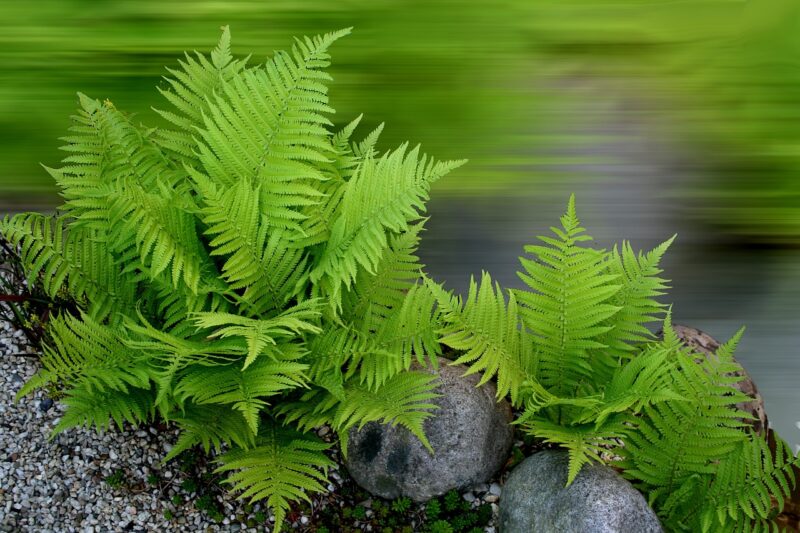
Ferns are among the best plants for shady areas, creating a lush, woodland vibe in your garden. Species such as lady fern (Athyrium filix-femina), ostrich fern (Matteuccia struthiopteris), and Japanese painted fern (Athyrium niponicum) provide different shapes and colors that can add a sense of elegance to your shade garden.
Ferns thrive in moist, well-draining soil and usually prefer acidic conditions. Some species, like the Japanese painted fern, are easy to grow and showcase silvery and deep green variegation. Their fronds add movement to the garden, particularly when swaying in a gentle breeze. They also do well in harmony with other shade plants, filling in difficult spots that tend to gather moisture.
Lungwort (Pulmonaria spp.)
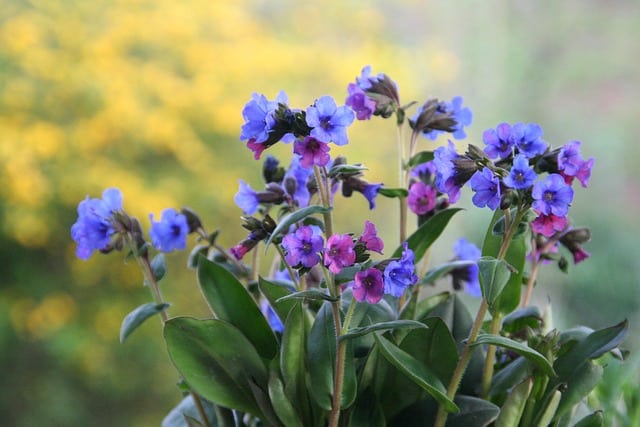
Lungwort is a charming herbaceous perennial that can brighten up the shadiest corners of your garden. Its leaves, often spotted or marbled, provide visual interest even when the plants aren’t in bloom. In spring, lungworts produce lovely bell-shaped flowers that can come in shades of blue, pink, or white, creating a delightful splash of color before many other shade plants start to flower.
These hardy plants prefer well-drained, moist soil and shade to partial shade, although the foliage can scorch in direct sunlight. Lungwort is also known for being a great ground cover, helping to suppress weeds and provide support for other plants. Varieties such as ‘Mrs. Moon’ or ‘Majeste’ offer stunning foliage variations that make lungwort a welcome addition to any garden layout.
Bleeding Heart (Dicentra spp.)
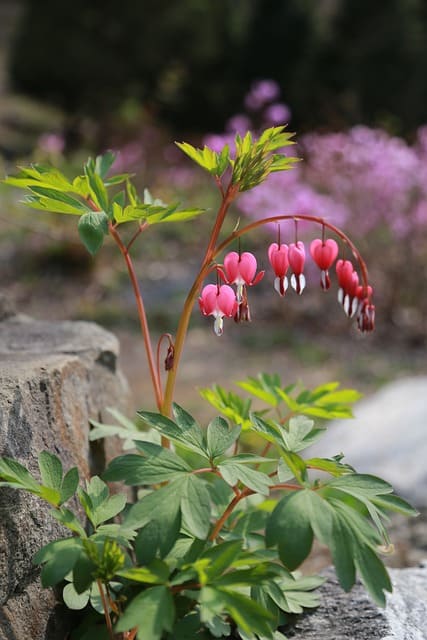
Bleeding heart is one of the most romantic plants in the garden, known for its unique heart-shaped flowers that appear in spring. The delicate pink or white blooms dangle from arching stems, creating a captivating display that attracts butterflies and adds charm to shaded spots. Their fern-like foliage provides an elegant background, making them an eye-catching companion to other shade-loving plants.
In terms of care, bleeding hearts prefer consistently moist soil and thrive best in partial to full shade. After blooming, the foliage will remain lush, but it’s perfectly normal for the plant to go dormant in the summer heat, which means you will see it disappear until the next spring. It’s best to plant them alongside other perennials that fill in the space once they have gone dormant.
Brunnera (Brunnera macrophylla)
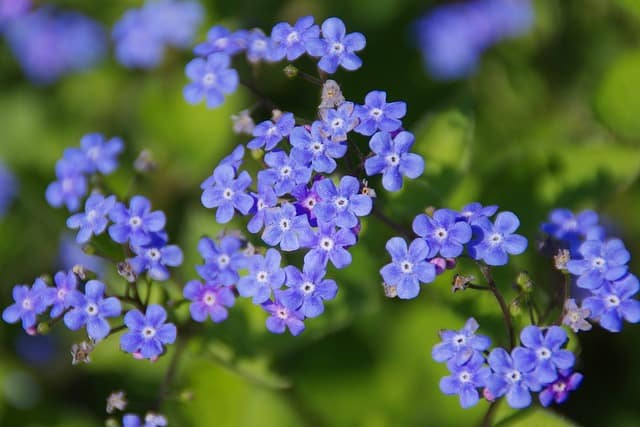
Brunnera, especially the beloved ‘Jack Frost’ variety, is a standout shade plant with its heart-shaped leaves and stunning baby-blue flowers resembling those of forget-me-nots. The striking silver veining on the leaves adds a captivating touch that brightens up even the darkest spots in your garden. Brunneras thrive best in rich, moist soil and prefer partial to full shade, making them perfectly suited for shady zones.
This plant not only blooms beautifully in spring but also performs well throughout the growing season with its vibrant foliage. Brunnera requires little maintenance, making it an excellent choice for beginners. It looks lovely when planted in groups, as its ground-covering nature helps suppress weeds while providing a colorful carpet of leaves.
Tiarella (Tiarella cordifolia)
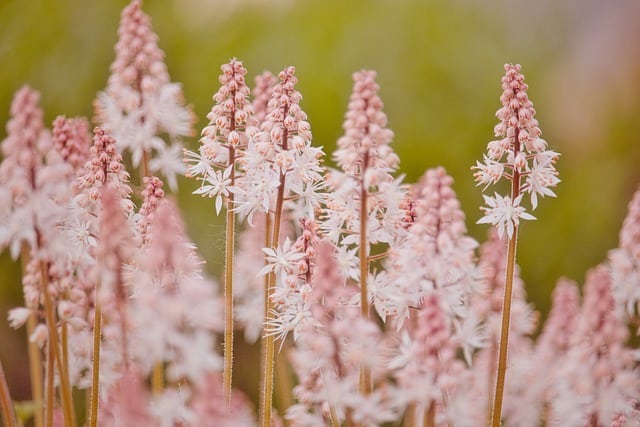
Tiarella, commonly known as false spirea, is a delightful perennial that works wonders in shady gardens. Known for its charming clusters of foamy white or pink flowers that rise above the deeply lobed foliage, Tiarella offers both texture and visual appeal. The flowers create a delicate look and are perfect for use in woodland gardens or under trees.
These plants prefer rich, well-drained soil with plenty of organic matter and thrive in full to part shade. Tiarella is also an excellent ground cover, capable of filling spaces rapidly without becoming invasive. Varieties like ‘Seedling’ or ‘Running Tiarella’ are particularly popular and excel in shady, moisture-retentive areas.
Hellebore (Helleborus spp.)
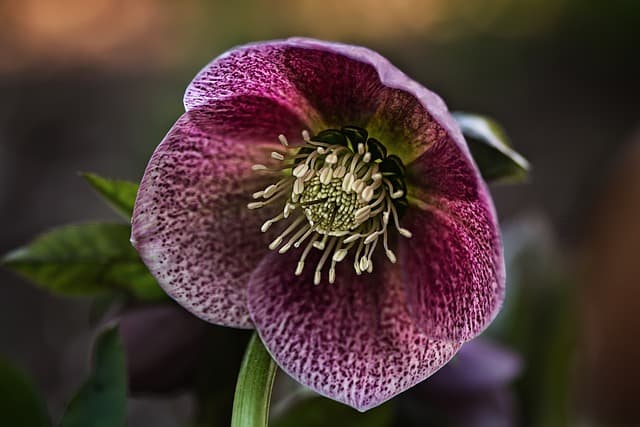
Hellebores are early bloomers that provide much-needed color to your shade garden in late winter and early spring. Often referred to as Lenten roses, these hardy perennials bear cup-shaped flowers in various shades—from white and green to purple and deep burgundy. Their leathery leaves emerge in beautiful rosettes, creating an inviting presence during their flowering season.
Hellebores thrive in rich, well-draining soil, preferably in partial shade. Their ability to flourish in less-than-ideal conditions makes them tough contenders in the garden. Moreover, hellebores are relatively pest-resistant and can tolerate drought once established. They can be an excellent choice for beginner gardeners who want reliable blooms in shaded areas.
Lily of the Valley (Convallaria majalis)
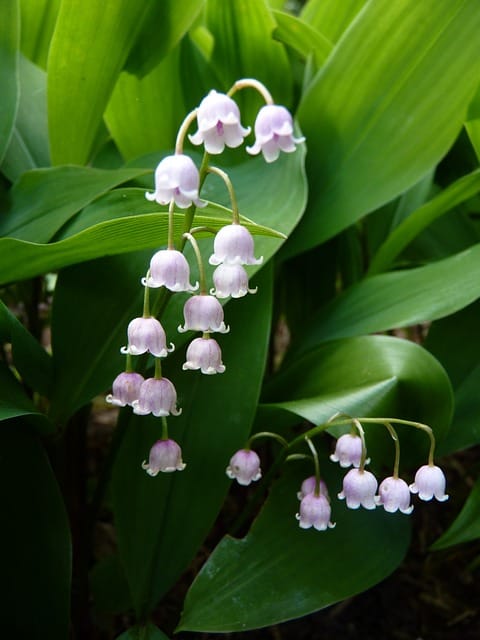
Lily of the valley is a classic shade plant with exquisite fragrant, bell-shaped flowers. This lovely perennial creates a serene atmosphere in shady gardens and provides a lush green ground cover with its glossy leaves. Though it spreads quickly, many gardeners appreciate its ability to fill difficult-to-plant areas.
Lily of the valley thrives in moist, well-drained soil and loves partial to full shade. Its robust nature and sweet scent make it a favorite for woodland gardens and under trees. Be mindful that this plant is toxic if ingested, making it less suitable for gardens with small children or pets. Nonetheless, its classic beauty makes it a well-loved staple in many shade gardens.
Solomon’s Seal (Polygonatum spp.)
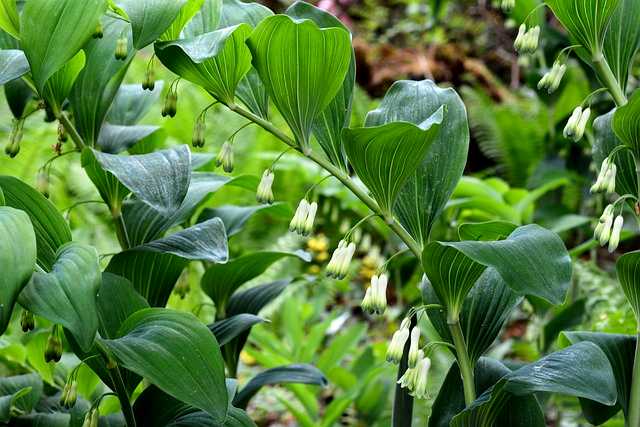
Solomon’s seal is a graceful perennial with arching stems and unique, lantern-like flowers that dangle gracefully beneath the foliage. Known for its elegant form and subtle beauty, it creates a serene presence in shaded areas. Solomon’s seal foliage turns yellow in the fall, offering an extended visual interest.
This plant prefers moist, well-drained soil and thrives in partial to full shade. It’s perfect for naturalizing in woodland gardens, allowing it to spread gradually over time. Varieties such as Polygonatum odoratum ‘Variegatum’ provide added charm with their elegantly variegated leaves, which make a stunning backdrop for other blooming plants.
Barrenwort (Epimedium spp.)
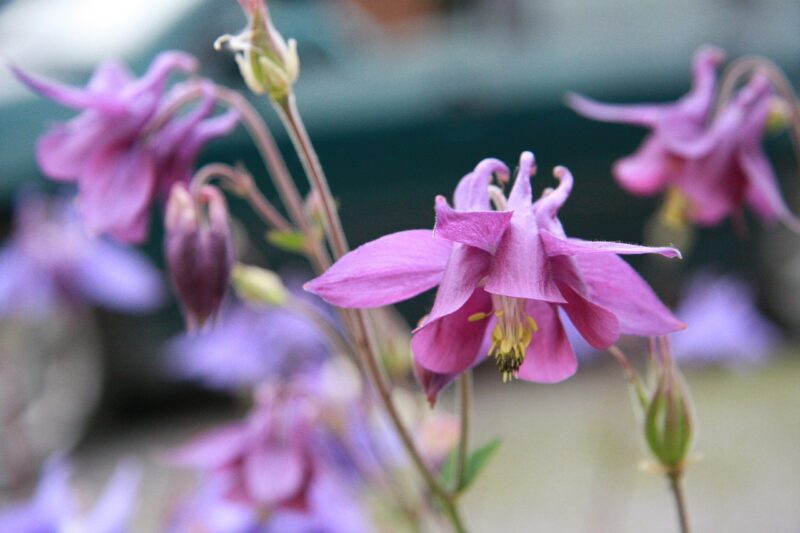
Barrenwort is a lesser-known gem that brings a unique charm to shade gardens. It produces delicate flowers that resemble small butterflies, floating above heart-shaped foliage that emerges early in spring. They thrive in dry shade, making them a fantastic choice for challenging spots under trees where other plants may struggle.
With a variety of species available, including Epimedium grandiflorum, you can choose from different flower colors and leaf forms. Barrenwort is relatively hardy and requires low maintenance; simply provide well-draining soil, and it will flourish. These plants also have a creeping growth habit, making them great for ground cover while creating a lovely carpet under taller plants.
Goat’s Beard (Aruncus dioicus)
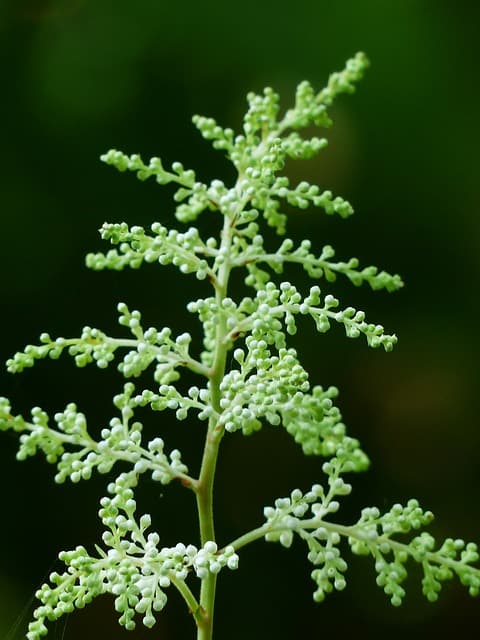
Goat’s beard is an impressive perennial with dazzling feathery flower plumes that can reach heights of 3 to 5 feet. This formidable shade-loving plant adds a touch of elegance and drama to your garden, making it an ideal choice for those looking to create a striking visual impact. Its flowers attract beneficial pollinators, encouraging biodiversity in your garden.
Goat’s beard flourishes in consistently moist, well-drained soil and prefers partial to full shade. While it can tolerate some sun, it thrives best in bright dappled light. The plant is resilient and can adapt to various soil conditions, although regular moisture will enhance its overall health. Varieties like ‘Crispa’ offer unique serrated leaves, providing additional visual interest through texture.
Japanese Forest Grass (Hakonechloa macra)
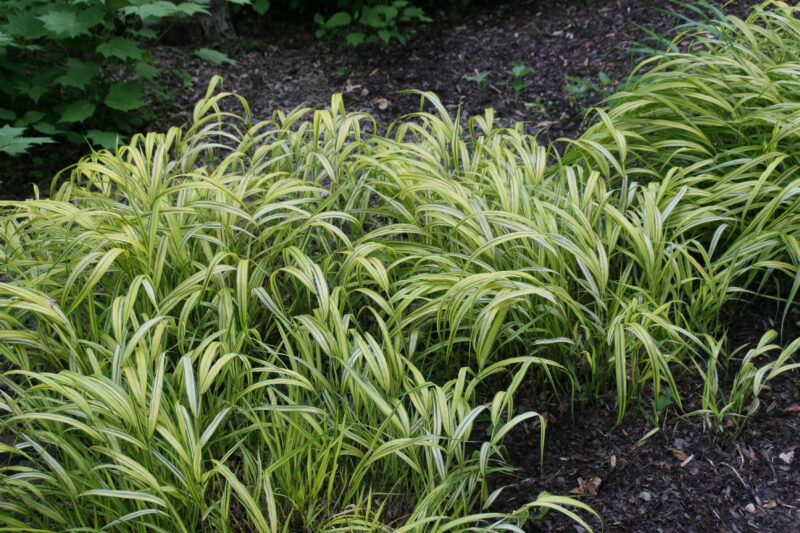
For a touch of elegance and movement, Japanese forest grass is an excellent addition to your shade garden. This ornamental grass adds texture and graceful arching forms that liven up the landscape. Its soft, green foliage turns golden in the fall, offering year-round beauty.
Hakonechloa macra thrives in moist, well-drained soil and prefers partial to full shade. This grass does best when given ample moisture, especially during hot summer months. The cascading growth habit makes it ideal for planting in borders or alongside pathways as a stunning ground cover. It is also resistant to pests and requires little maintenance, making it a perfect choice for beginner gardeners.
Columbine (Aquilegia spp.)
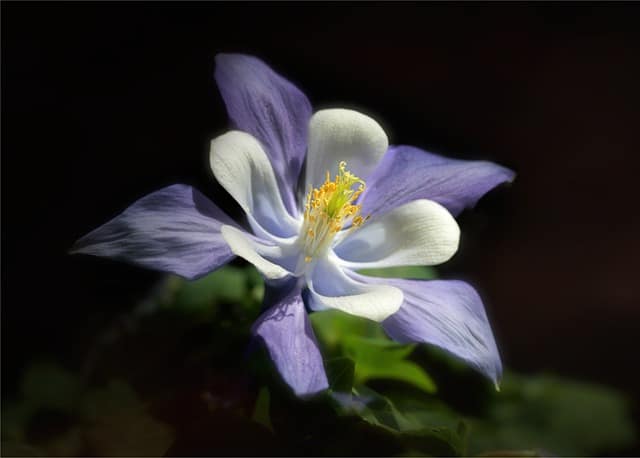
Columbines are whimsical, charming flowers that come in a range of colors and forms. Their unique, spurred flowers add a delightful element to shaded gardens, attracting hummingbirds and butterflies alike. Columbines typically bloom in spring and early summer, providing bursts of color when many plants are just starting to wake from dormancy.
These plants prefer well-drained soil and thrive best in partial shade, although some varieties can tolerate full shade. Once established, columbines will self-seed, allowing them to return year after year. Varieties such as ‘McKana Giants’ feature large blooms, while ‘Origami’ offers enchanting, compact flowers in rich, bright colors.
True Siberian Bugloss (Brunnera sibirica)
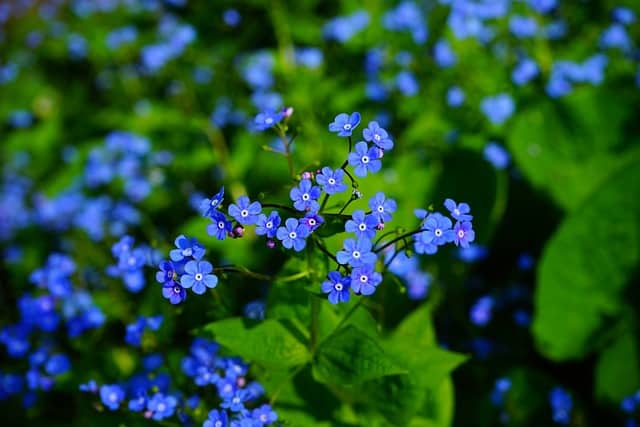
True Siberian bugloss, often overlooked, is a robust plant that resembles its cousin, Brunnera macrophylla, but has its own unique appeal. It’s known for its bright blue flowers that appear in spring, often reminiscent of forget-me-nots. The heart-shaped foliage adds texture and charm to the garden year-round.
This perennial thrives in well-drained, moist soil and is perfect for partial to full shade. It’s an excellent choice for naturalizing wildflower borders or adding color under trees. As an added bonus, true Siberian bugloss can tolerate drought once established and can proliferate through self-seeding, making it an easy addition to a beginner’s shade garden.
Corydalis (Corydalis spp.)
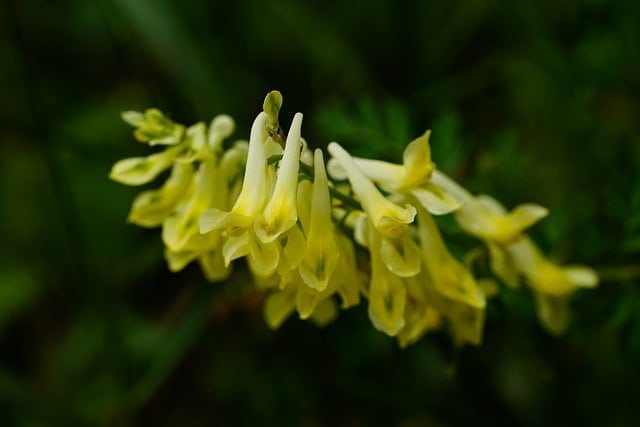
Corydalis is a charming perennial that often surprises gardeners with its delicate, fern-like foliage and tubular flowers that bloom in shades of blue, purple, yellow, or white. These low-growing plants thrive in shaded areas of the garden and bring vibrant color in the spring when other plants are just beginning to awaken.
They do best in well-drained, rich soil and appreciate consistent moisture. Corydalis can handle dappled light but flourishes in full shade. It naturally spreads through underground roots, giving it a gentle, spreading nature that fills in areas beautifully. Varieties like Corydalis lutea provide long-lasting blooms that are sure to brighten up any shady spot.
Lamium (Lamium maculatum)
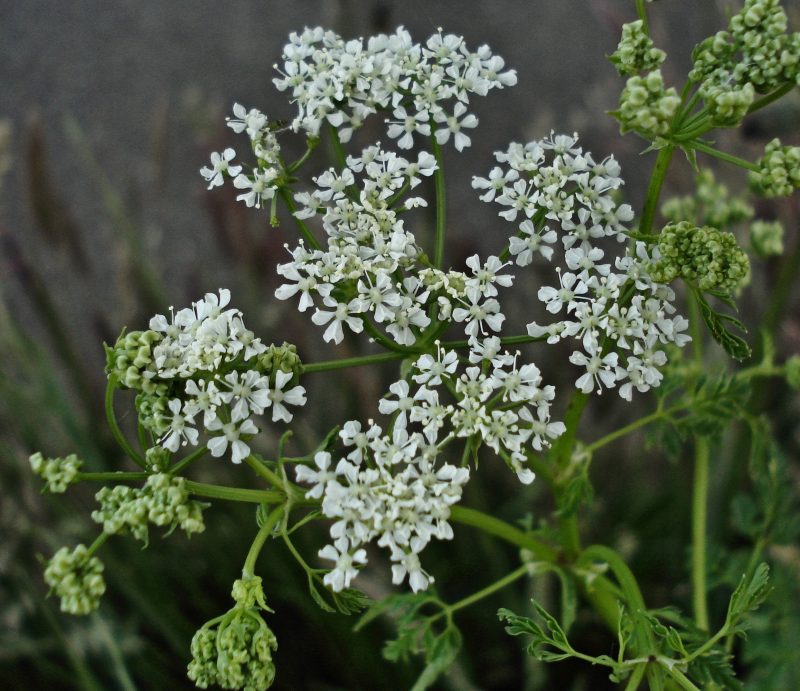
Lamium, or spotted dead nettle, is a delightful ground cover that can help suppress weeds while adding color and texture to the shade. Its attractive, heart-shaped leaves may be variegated or solid green, and it produces lovely clusters of small flowers in spring and summer, ranging in color from white to violet.
This adaptable plant thrives in well-drained soil and prefers partial to full shade, making it an excellent choice for filling in difficult areas beneath trees or along pathways. It’s a resilient perennial that requires minimal care, blooming year after year with vibrant foliage. Varieties such as ‘Pink Pewter’ are particularly sought after for their lovely flower colors as well as their striking leaves.
Foxglove (Digitalis spp.)
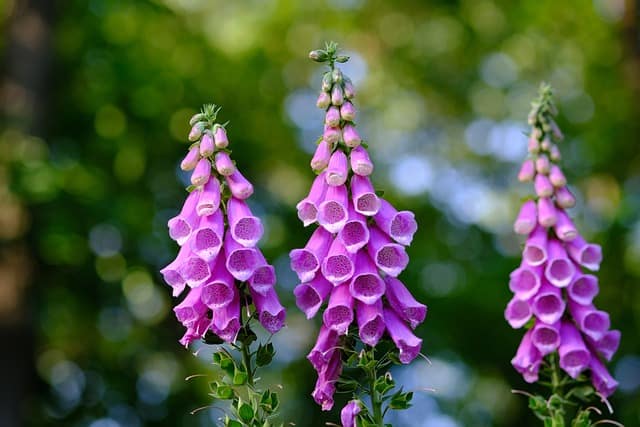
Foxglove is a striking biennial or short-lived perennial that can bring extraordinary height and drama to your shade garden. Known for its tall spikes adorned with tubular flowers, typically in shades of purple, pink, or white, this plant is particularly attractive to bees and other pollinators.
While foxglove prefers dappled light, it can tolerate partial shade. Well-drained, rich soil and consistent moisture will support its growth and flowering. Be cautious, as foxglove contains compounds that are toxic if ingested, which makes it ideal for gardens away from small children and pets. Many beginners find the vibrant blooms a worthy trade-off for a little extra caution.
Japanese Anemone (Anemone hupehensis)
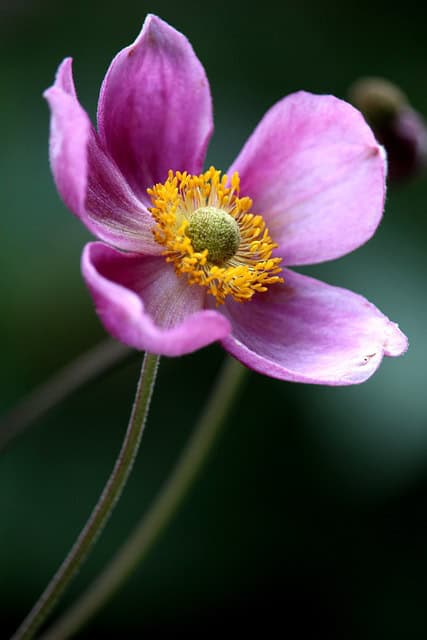
Japanese anemone is a lovely late-season bloomer that can add color to your shade garden when many other flowers have faded. These perennials produce attractive white or pink flowers on tall stems, creating a soft, graceful look that complements the surrounding foliage.
Thriving in rich, well-drained soil, Japanese anemones prefer partial shade and can tolerate full shade. They also form large clumps that can spread over time, making them great for filling in bare spots. These plants are resilient and can thrive in a variety of soil conditions as long as they have enough moisture. Their ability to attract butterflies adds an enchanting quality to your shaded escape.
Bigroot Geranium (Geranium macrorrhizum)
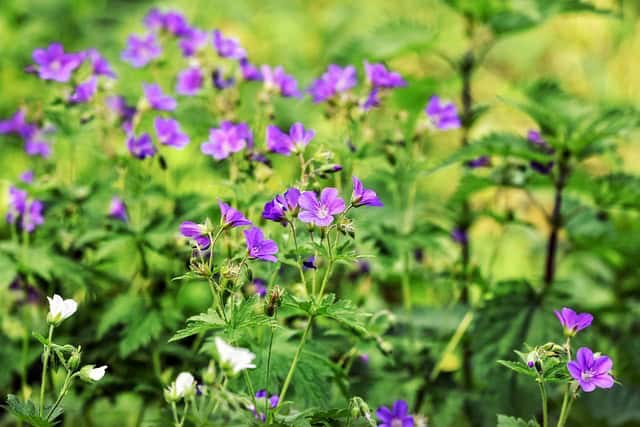
Bigroot geranium is a low-growing perennial that excels in shaded gardens with its hardy and resilient nature. This plant produces clusters of pink or white flowers in late spring to early summer, brightening up the landscape. Its attractive, deep green leaves provide excellent ground cover, helping to suppress weeds while creating a lush carpet of foliage.
These geraniums prefer with partial shade but can tolerate full shade. They thrive in well-drained soil and appreciate consistent moisture. Once established, they are relatively easy to care for, requiring little attention and still providing reliable blooms year after year.
Virginia Bluebells (Mertensia virginica)
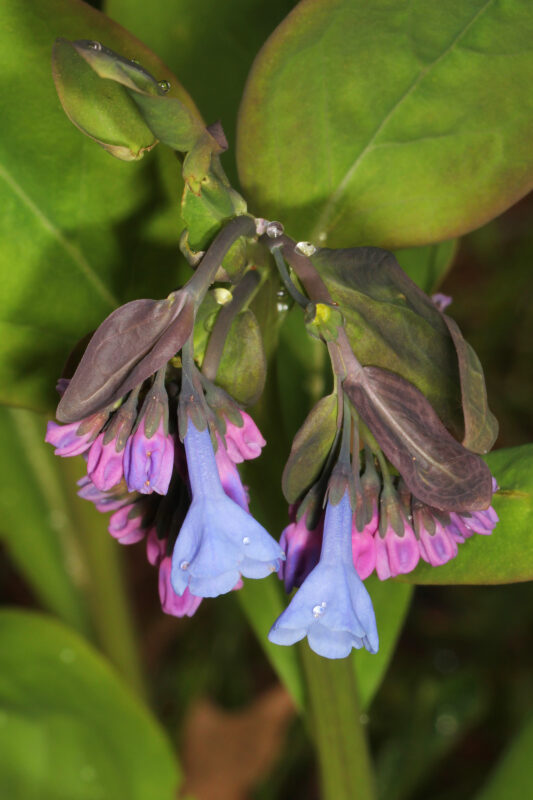
Virginia bluebells are a wonderful native plant for shade gardens, known for their stunning clusters of blue, bell-shaped flowers that bloom in early spring. These charming perennials bring a breathtaking splash of color to shaded areas and attract pollinators like bees and butterflies.
These plants thrive in rich, moist soil and prefer partial to full shade. Virginia bluebells are also known for their ability to naturalize, gradually spreading and forming lovely colonies as they mature. Once they bloom, the foliage remains attractive well into the summer months before going dormant, making them a valuable addition to any shade garden.
Chinese Astilbe (Astilbe chinensis)
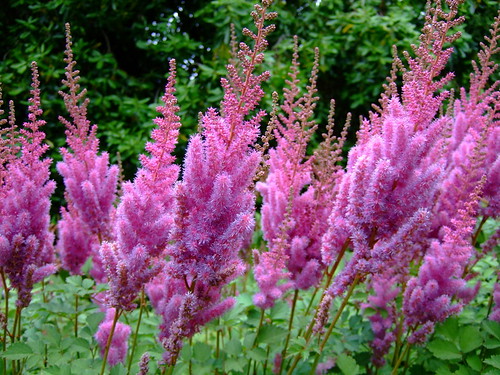
Similar to its counterparts, Chinese astilbe features beautifully graceful flower plumes but offers a unique texture and color variation with its foliage. This perennial thrives in moist, shaded areas and blooms later in the summer, filling your garden with color when many other plants have finished their show.
Chinese astilbe loves rich, well-draining soil and is a perfect choice for creating dramatic contrasts with other shade-loving plants. Their feathery flowers range from shades of pink to deep red, providing vertical interest in your garden. For beginners, they are relatively easy to grow and manage, making them an excellent option for adding depth and beauty to shaded spots.




